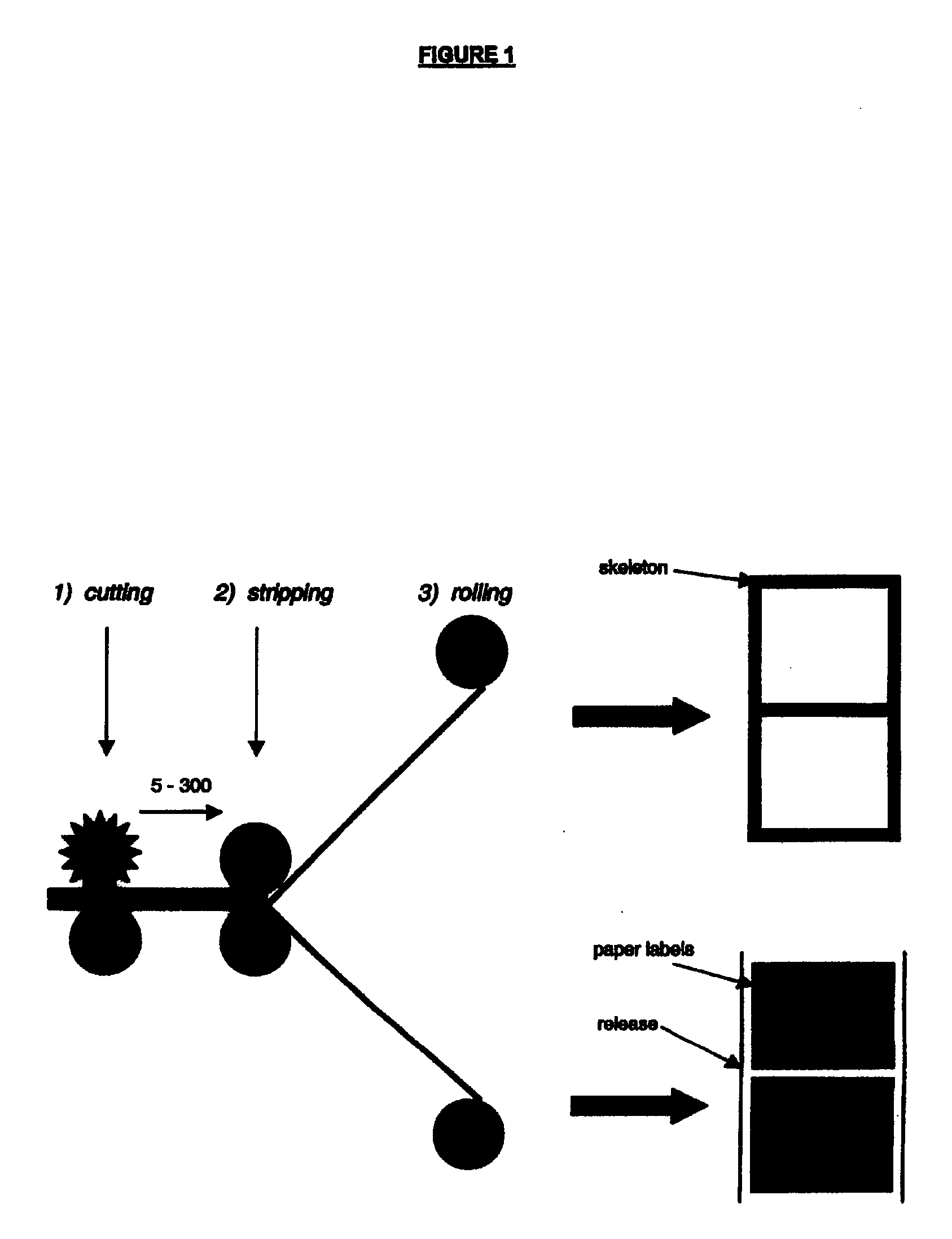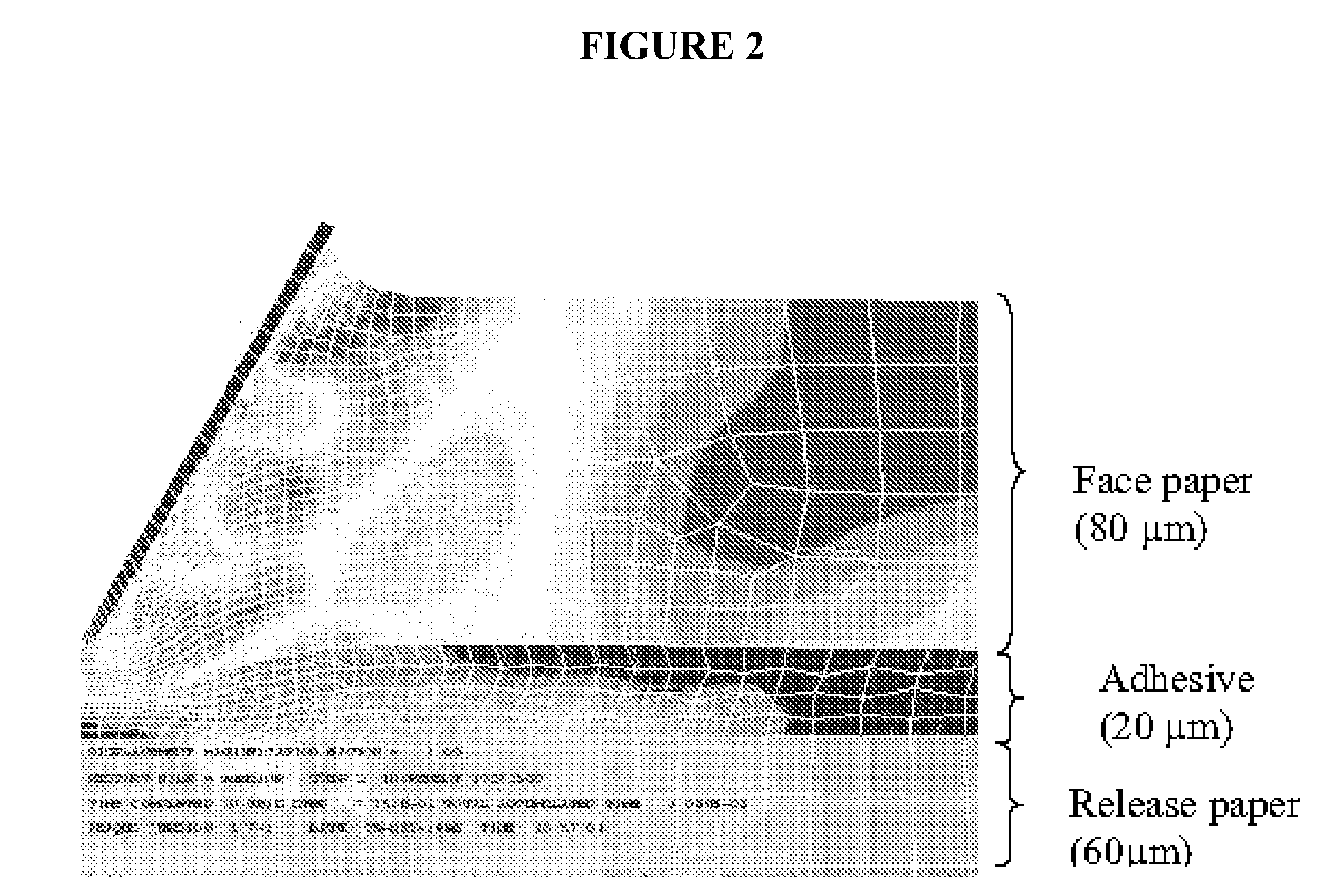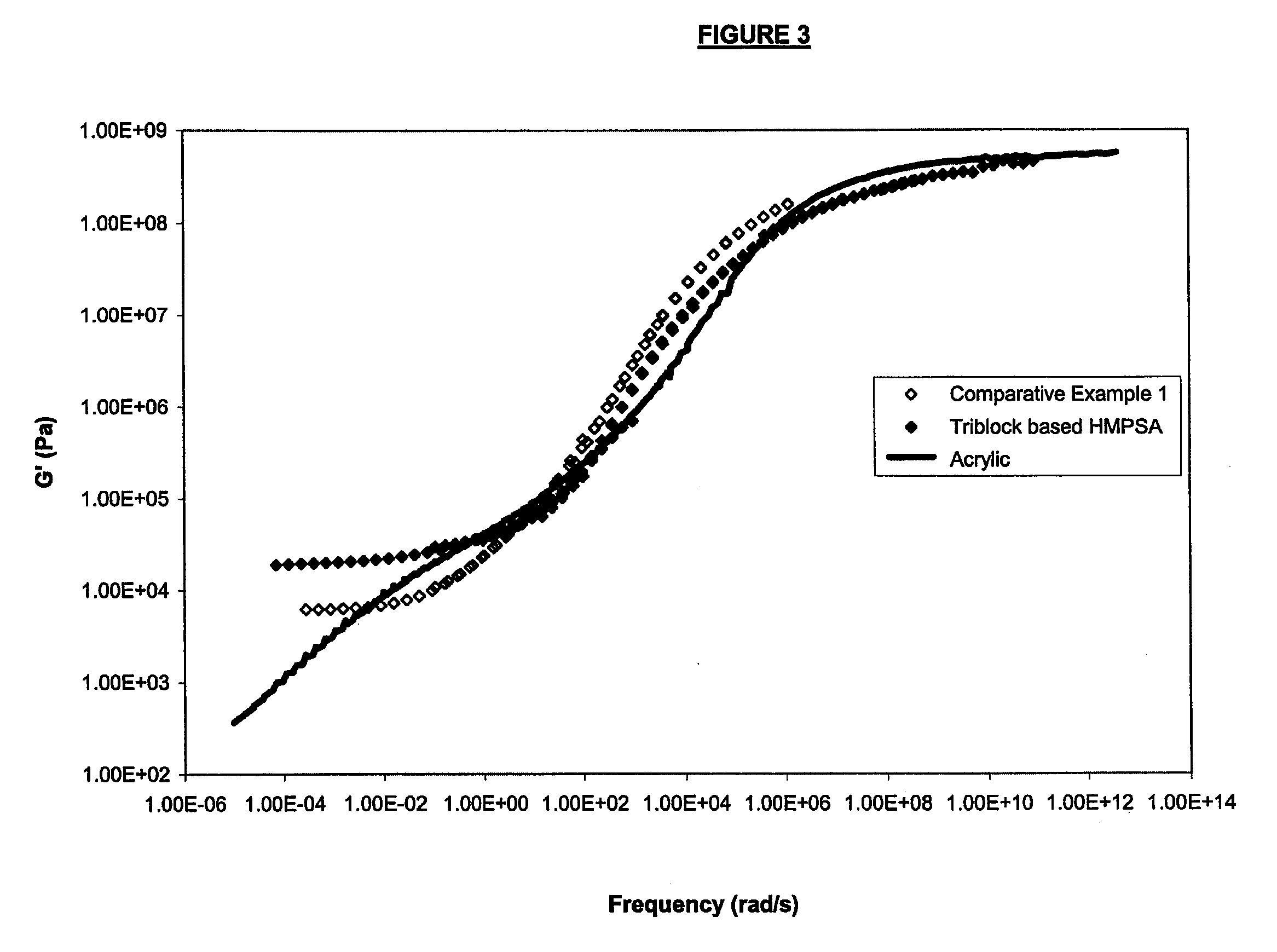Radial Block Copolymers and Adhesives Based Thereon With Improved Die-Cutting Performance
a technology of copolymer composition and adhesive layer, which is applied in the direction of film/foil adhesives, synthetic resin layered products, chemistry apparatus and processes, etc., can solve the problems of difficult and inconsistent die-cutting, difficult to cut or break adhesive film, and limit the ease of conversion of adhesive layer, etc., to improve the die-cuttability in production, improve the effect of melt viscosity and improved shear resistan
- Summary
- Abstract
- Description
- Claims
- Application Information
AI Technical Summary
Benefits of technology
Problems solved by technology
Method used
Image
Examples
examples
[0115]The following Examples A and B illustrate the Production of High Diblock / Radial Block copolymer Mixtures via control of coupling efficiency.
example a
[0116]To a 5-gallon stirred reactor under a nitrogen atmosphere were added 12.5 kg of cyclohexane solvent and 84.0 g of a 0.17 M solution of sec-butyl lithium in cyclohexane. The temperature of the reactor was brought to 75° C. and 339 g of styrene was added. Polymerization of the styrene was allowed to continue for 36 minutes. The reaction mixture was cooled to 57° C. and 1692 g of isoprene was added. The isoprene was allowed to polymerize for 46 minutes, during which the reaction temperature reached a maximum of 92° C. At the end of the 46 minutes, 10 grams of butadiene was added at 71° C. and it was allowed to polymerize for an additional 34 minutes. Then 1.0 g of 0.87 M SiCl4 in cyclohexane was added all at once. The reaction was allowed to continue for another 26 minutes before the reaction was terminated by addition of 3.0 ml of isopropanol.
[0117]The resulting polymer was analyzed by GPC, and found to contain 82.0% diblock and 18.0% coupled radial block polymer. The radial blo...
example b
[0118]To a 5-gallon stirred reactor under a nitrogen atmosphere were added 12.5 kg of cyclohexane solvent and 79.1 g of a 0.17 M solution of sec-butyl lithium in cyclohexane. The temperature of the reactor was brought to 82° C. and 339 g of styrene was added. Polymerization of the styrene was allowed to continue for 37 minutes. The reaction mixture was cooled to 58° C. and 1692 g of isoprene was added. The isoprene was allowed to polymerize for 26 minutes, during which the reaction temperature reached a maximum of 95° C. At the end of the 26 minutes, 10 grams of butadiene was added at 71° C. and it was allowed to polymerize for an additional 43 minutes. Then 3.1 g of 0.87 M SiCl4 in cyclohexane was added all at once. The reaction was allowed to continue for another 31 minutes before the reaction was terminated by addition of 3.0 ml of isopropanol.
[0119]The resulting polymer was analyzed by GPC, and found to contain 49.1% diblock, about 1% polystyrene homopolymer and the remainder co...
PUM
| Property | Measurement | Unit |
|---|---|---|
| storage modulus | aaaaa | aaaaa |
| storage modulus | aaaaa | aaaaa |
| wt % | aaaaa | aaaaa |
Abstract
Description
Claims
Application Information
 Login to View More
Login to View More - R&D
- Intellectual Property
- Life Sciences
- Materials
- Tech Scout
- Unparalleled Data Quality
- Higher Quality Content
- 60% Fewer Hallucinations
Browse by: Latest US Patents, China's latest patents, Technical Efficacy Thesaurus, Application Domain, Technology Topic, Popular Technical Reports.
© 2025 PatSnap. All rights reserved.Legal|Privacy policy|Modern Slavery Act Transparency Statement|Sitemap|About US| Contact US: help@patsnap.com



